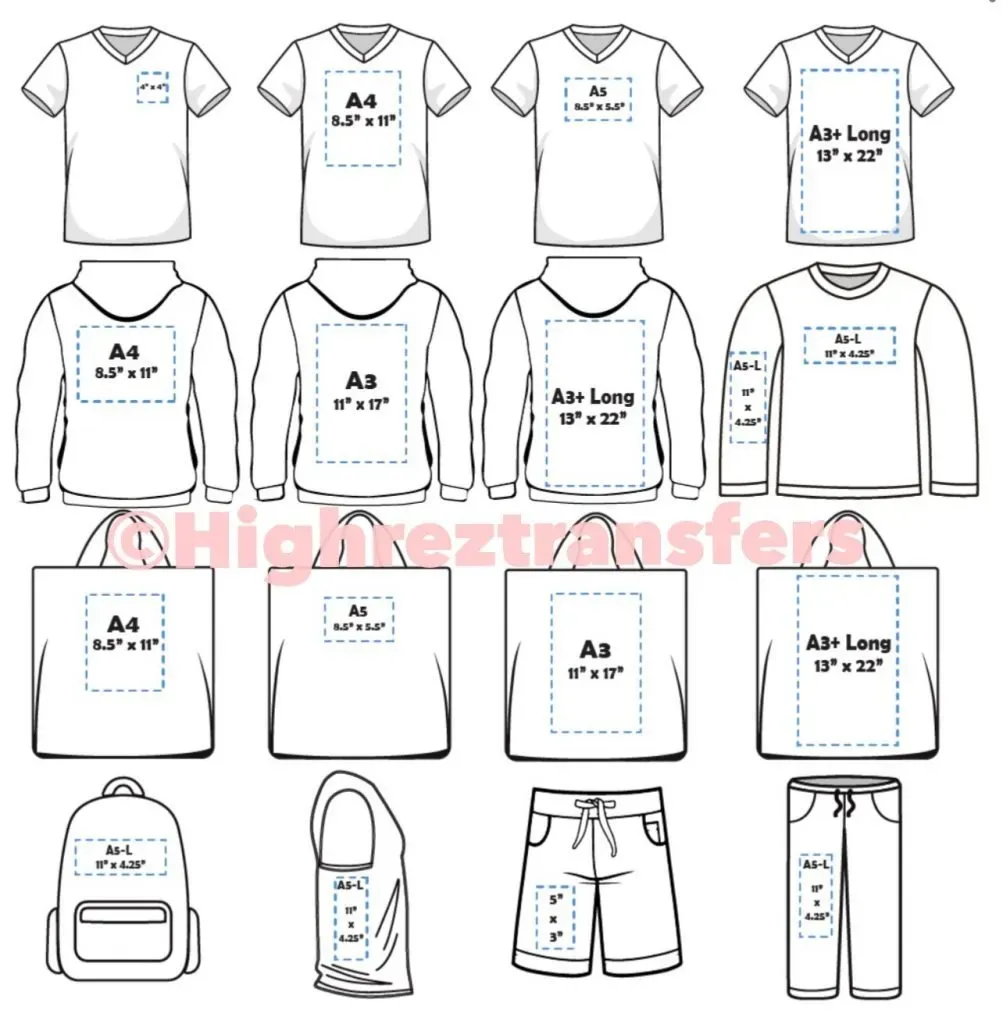DTF Transfer by Size is at the forefront of modern apparel design, offering an innovative solution that tailors fashion technology to the unique demands of various garment sizes. This method, known as Direct-to-Film (DTF) printing, provides remarkable flexibility for fashion designers and manufacturers, enabling them to create custom sizes that resonate with diverse consumer needs. In a world where personalization is key, the significance of size-specific transfers cannot be overstated, as they ensure that intricate designs maintain their vibrancy and impact across all apparel shapes. This blog post will explore how leveraging DTF transfers not only enhances aesthetic appeal but also aligns with the latest trends in the apparel industry. From optimizing production workflows to meeting customer expectations, discover how incorporating DTF printing into your design strategy can transform your brand’s identity and increase marketability.
When we talk about DTF Transfer by Size, we’re diving into the realm of Direct-to-Film printing—a revolutionary approach that brings together fashion innovation with targeted design. This process allows for the creation of print designs that cater specifically to the dimensions of each garment, enhancing both visual appeal and fit. By employing size-specific designs, designers can ensure that the essence of their creations is preserved, regardless of variations in clothing size. Moreover, as the apparel market shifts towards tailored solutions and personalized experiences, adopting size-customized transfers has never been more vital for brands aiming to stand out. In this discussion, we will uncover the myriad benefits of integrating this advanced printing technology into your apparel line.
The Evolution of DTF Transfer Printing
Direct-to-Film (DTF) printing has transformed the landscape of apparel design, offering unparalleled capabilities that were once unimaginable. Initially, traditional screen printing dominated the market, but its limitations in design intricacy and color vibrancy made way for innovative technologies like DTF. This technique uses a special transfer film to print intricate designs with rich color profiles directly onto garments, thereby enhancing the visual appeal of various apparel types. As fashion technology continues to progress, DTF printing stands at the forefront, providing designers with the tools they need to elevate their creations.
The versatility of DTF printing not only includes a broad range of colors and patterns but also extends to its compatibility with various materials. Whether it’s cotton, polyester, or even blends, DTF transfers adhere well to multiple fabric types, making them an excellent choice for custom apparel design. As we move forward, the continuous refinement of printing processes and ink formulations will only solidify DTF printing’s position as a cornerstone in the future of fashion technology.
Frequently Asked Questions
What are the benefits of DTF Transfer by Size in apparel design?
DTF Transfer by Size offers numerous benefits for apparel design, including tailored aesthetics for different garment sizes, improved design integrity, and enhanced visibility. This method allows your artwork to maintain its impact across small, medium, and large pieces, ensuring a professional look and customer satisfaction.
How does DTF printing enhance custom sizes for apparel?
DTF printing enhances custom sizes by allowing designers to create size-specific transfers that fit perfectly on each garment. This ensures that the designs remain proportionate and visually appealing, regardless of the size, thereby increasing the overall wearability and attractiveness of the apparel.
Can DTF Transfer by Size be applied to various fabric types?
Yes, DTF Transfer by Size can be applied to a wide variety of fabrics, including cotton, polyester, and blends. It is essential to choose the right transfer film that complements the fabric’s properties for optimal adhesion and durability, ensuring designs withstand washing and wear.
How can size-specific DTF transfers optimize workflow in fashion technology?
Implementing size-specific DTF transfers optimizes workflow by reducing material waste and ensuring that each design piece is accounted for. This leads to a more efficient production process, allowing businesses to produce higher volumes of apparel while maintaining quality control and profitability.
What technological advancements have improved DTF printing for size-specific designs?
Recent advancements in DTF printing technology, including enhanced ink formulations and dedicated printers for size-specific applications, have improved adhesion and color vibrancy for customized apparel. These innovations enable brands to offer high-quality, personalized products that meet diverse consumer preferences.
How does size-customized DTF Transfer align with market trends in apparel design?
Size-customized DTF Transfer aligns with current market trends focused on personalization and consumer choice. By providing size-specific designs, brands can cater to diverse body types, improve customer satisfaction, and build brand loyalty, ensuring they meet the evolving expectations of today’s consumers.
| Key Points | Details |
|---|---|
| DTF Transfer Overview | DTF printing transfers designs onto fabric via a film, allowing for vibrant colors and intricate details. |
| Importance of Size-Specific Designs | Adjusting designs for various sizes ensures quality and enhances aesthetic appeal. |
| Material Compatibility | DTF transfers work on various fabrics, but film must match the fabric type for best results. |
| Workflow Optimization | Size-specific transfers reduce waste and improve production efficiency. |
| Advancements in DTF Technology | Innovations in ink and equipment enhance durability and custom fit options. |
| Market Trends | Consumers seek personalized products that reflect individual styles and preferences. |
| Consumer Expectations | Offering size-specific DTF transfers can boost customer satisfaction and brand loyalty. |
Summary
DTF Transfer by Size represents a transformative approach in the fashion industry, emphasizing the importance of tailoring designs to fit various garment sizes. This method not only enhances aesthetic outcomes but also ensures that the integrity of designs is maintained across different products. By utilizing size-specific transfers, businesses can increase efficiency while aligning with contemporary market trends that demand personalization. Thus, adopting DTF technology is crucial for brands to stay competitive and meet evolving consumer expectations.


